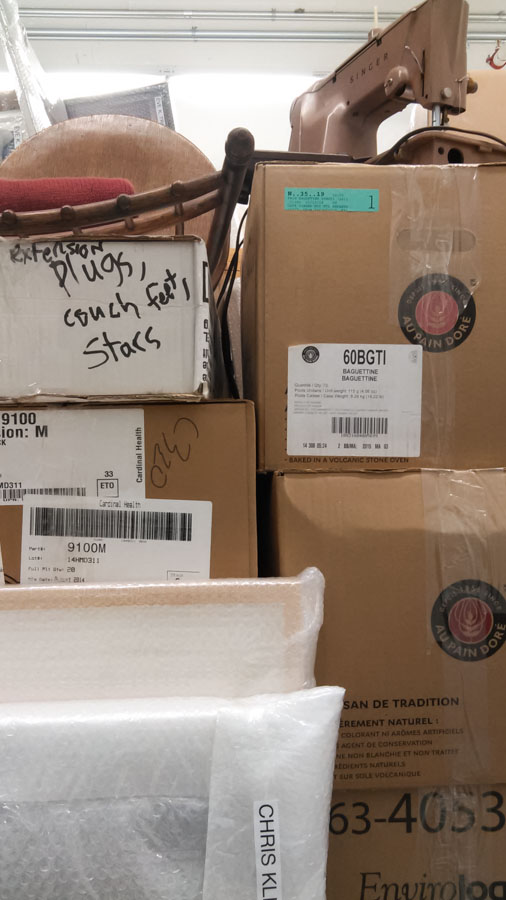At first glance, “Capitalism in the 21st Century” is a little difficult to take seriously. The exhibit, from Montreal gallery director Jean-Michel Ross, consists of one small room filled almost to the ceiling with an odd collection of carefully stacked furniture and miscellaneous household items. According to the exhibit brochure, this is “all of [Ross’] family’s physical capital in Montreal.”
Currently doing a residency in China, Ross will return to Montreal in June and move into a new space in Outremont. In the meantime, all the belongings he left behind are on display here, at the Thomas Henry Ross Gallery of Contemporary Art.
Interspersed among the mundane objects are the hundred-odd works of art that make up Ross’ personal collection. Swathed in near-opaque layers of bubble-wrap and labelled with their artists’ names, most of the pieces are completely hidden from view, or else peek out from behind mattresses and stacks of dining room chairs. A painting by high-profile Montreal-based artist Chris Kline leans incongruously next to a battered cardboard box on which someone has scrawled “extension plugs, couch feet, stars.” A number of works by General Idea – the Canadian collective who gained international fame as pioneers of conceptual art – sit side-by-side with rusting bicycles, broken lamps, and countless more boxes.
In purely monetary terms, the collective value of the hundred works in this room must be extremely high. Yet to the observer, these stacked white packages with their clinical labels are about as engaging as the box of extension plugs.
The objects are packed tightly together, leaving no space for viewers to circulate. This inaccessibility forces the viewer to take them in all at once, heightening the impact of the exhibit as a whole. The public cannot inspect each of Ross’ possessions, just as they cannot admire his art collection because it is hidden in packaging. Instead, they are confronted with a single, impenetrable heap, in which works of art and furniture alike are reduced to mere forms of capital.
Indeed, according to Ross’s press release, the exhibit was heavily inspired by Thomas Piketty’s acclaimed book Capital in the Twenty-First Century. “Here is a proposal,” it states “to reflect on capital in terms of art works, art objects and just plain objects, in the context of a private gallery.” And for all its initial absurdity, the exhibit does raise important questions about both the nature and the value of art.
Like many of the groundbreaking works in Ross’ collection, “Capitalism in the 21st Century” calls into question the boundaries of art itself. Does this collection of miscellaneous items count as a work of art? This question is hardly a new one, having preoccupied the conceptual art movement since Marcel Duchamp’s signed urinal – a piece called “Fountain” – awoke a storm of controversy in 1917 New York. Here, though, Ross adds another level of analysis with his bubble-wrapped canvases, obscuring their thought-provoking content while calling attention to their role as capital in the art market. In purely monetary terms, the collective value of the hundred works in this room must be extremely high. Yet to the observer, these stacked white packages with their clinical labels are about as engaging as the box of extension plugs. The exhibit’s lack of aesthetic appeal, however, like the inaccessibility of much of its content, is part of the broader reflection on capitalism.
“Capitalism in the 21st Century” is thought-provoking in its lack of expression, demonstrating capitalism can commodify art, emptying it of its beauty. Here, Ross presents these ‘important’ works as another form of capital to be amassed, inherited, and stacked in vaults. This disquieting suggestion at the heart of the installation begs the final question: when we reduce art to its monetary value, what have we lost – and what is left?

